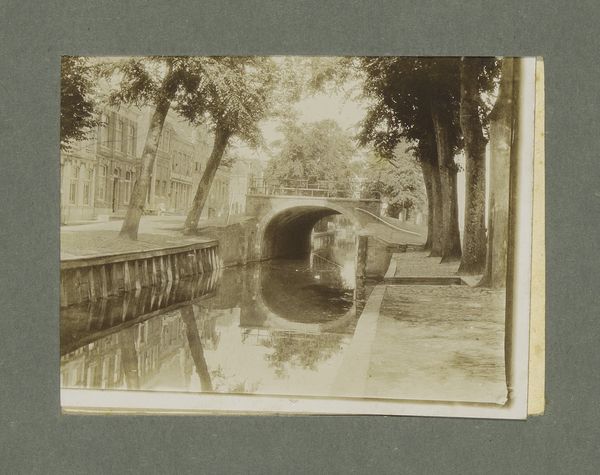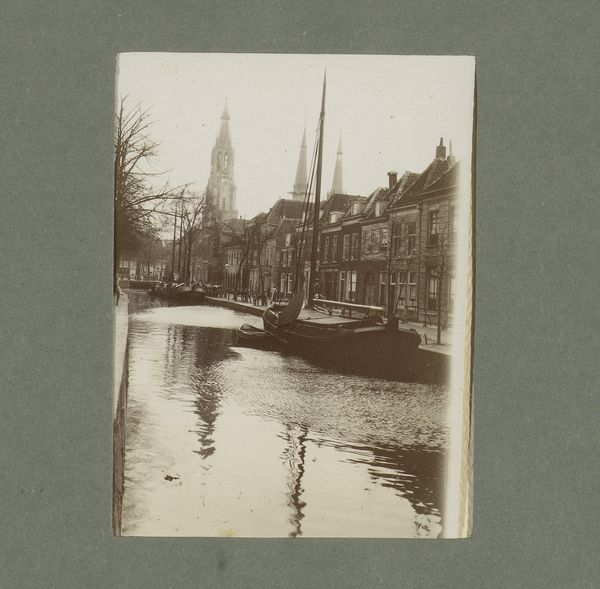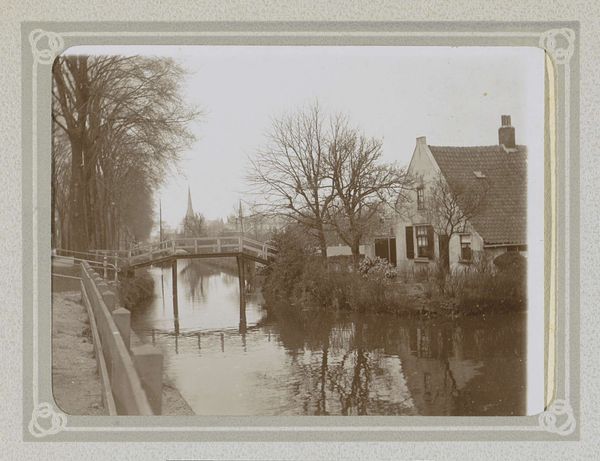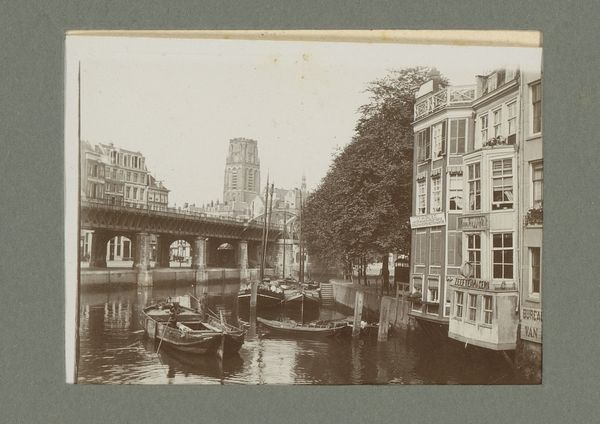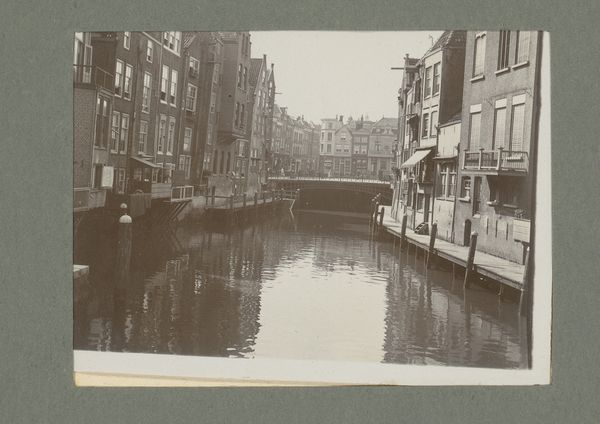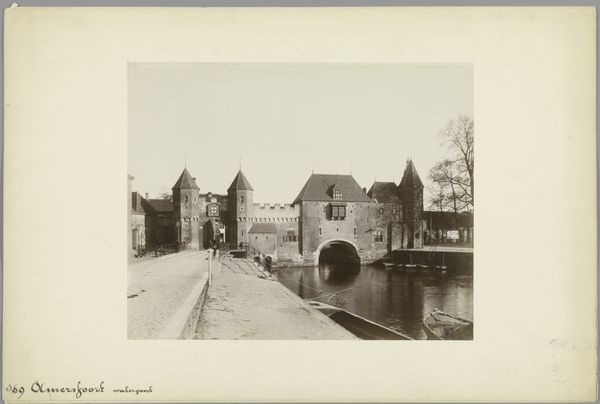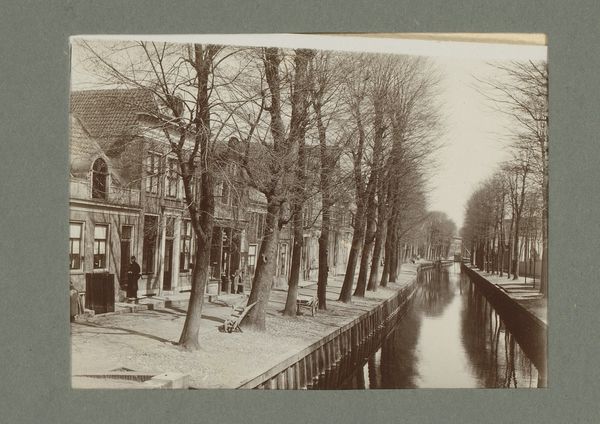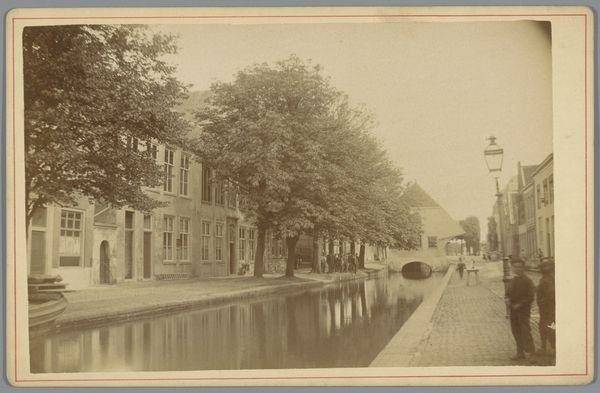
photography, gelatin-silver-print
#
landscape
#
photography
#
gelatin-silver-print
#
cityscape
#
realism
Dimensions: height 74 mm, width 99 mm
Copyright: Rijks Museum: Open Domain
Curator: G. Hidderley's gelatin silver print, “Gezicht op een brug over een gracht,” or "View of a Bridge over a Canal" as it translates to English, created sometime between 1920 and 1940, really captures a specific time. What's your first impression? Editor: Well, it feels undeniably melancholic. That grey palette really drenches everything, even the reflections in the water feel heavy. There’s a kind of somber dignity in the stillness. Curator: It’s true. The composition relies heavily on these opposing surfaces of aged brick, capturing a sense of enduring history reflected in the slightly moving water. Editor: Exactly, I can’t help but see this as more than just a record. The deliberate framing with the dark arches to the left, juxtaposed with the more open bridge on the right—it seems Hidderley wanted to say something about the old versus the new. Or maybe the known versus the unknown. It’s got this slightly unnerving depth of the arches fading back. Curator: Absolutely, and that’s where the genius lies, I think. The photo provides, for those living at the time and us today, the function of preserving an increasingly forgotten sense of community. Everyday life in the cityscape made art. Consider the fact that the people walking on the bridge become essential to this frozen slice of time. Photography opened those kinds of possibilities for seeing our culture, and in particular the people living in this place, which had previously been left unsaid. Editor: Do you think he ever knew that the very details that feel everyday to him—the type of railings on the bridge, the lines of the brickwork, the bare trees—would feel like a portrait of something lost to future eyes like mine? It’s funny how the mundane becomes profound, given enough distance. Curator: Indeed, distance and time, as institutions, make a great critic of art. By bringing those objects of everyday experience into visual prominence and framing the narrative from this kind of low angle of sight, it allows this print to act as a lens through which the values and priorities of a culture, now nearly a century past, can be reflected. Editor: This feels like one of those quiet, powerful pieces that slowly unfurls its stories the longer you look. There is some magic in being able to capture a moment, in what seemingly appear to be normal or everyday times, but that carry messages through the years. Curator: And isn’t that why we preserve art?
Comments
No comments
Be the first to comment and join the conversation on the ultimate creative platform.
